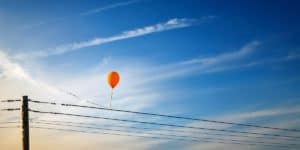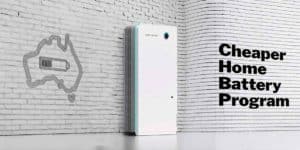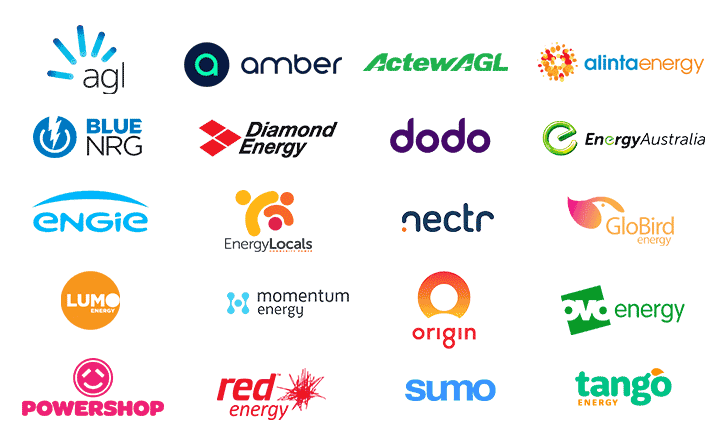
Listed below are electricity retailer’s latest usage rates for households in the ACT, NSW, NT, QLD, SA, TAS, VIC and WA.
What are Usage Rates? Usage Rates are the amount you pay per kWh for the electricity you consume in your home. This includes lighting, appliances, air conditioning, ovens etc.
Usage rates are charged one of two ways.
1. Anytime rates have the same cost whether power is used day or night. Anytime rates may change once you use a set amount of energy.
2. Time of Use (TOU) also referred to as Flexible rates are charges that reflect what time power is consumed. Peak rates apply during daytime periods when demand is greater so the cost is higher. Off Peak rates apply to nighttime when demand is lower so the rate is cheaper. Depending on your Time of Use plan, a Shoulder rate may apply to the period between Peak and Off Peak. View the time of use hours by electricity network. You’ll need an interval meter that measures when your power is consumed to be eligible for a Time of Use plan. Rates for controlled loads such as electric off-peak hot water systems are covered in our controlled load comparison.
Usage Rates vary depending on;
1. The electricity network region you are connected to. There are 15 major electricity networks in Australia.
2. The electricity retailer who you buy power through.
Looking to switch between tariffs?
Depending on your network and meter type you may be able to change your tariff type – but it’s not always easy. See WATTever’s How to Switch Tariff Guide for a rundown on the rules plus practical advice.
Here’s how to find the best deal.
A low usage rate is important, but to find the best deal you also need to consider daily charges, controlled load rates and feed-in tariffs if you have solar. We make it easy to get it right when you compare with WATTever’s comprehensive electricity comparison. You’ll see a personalised cost ranking of all publicly listed electricity plans, based on your energy use to help you make serious savings. We include all retailers, tariff types, discounts, solar feed-in tariffs, input for concessions and more. For extra tips check out our essential guide to comparing electricity properly.
Select your State/Territory:
Australian Capital Territory Residential Electricity Anytime Usage Rates
Retailer Plan:
Network:
Anytime Rate #1:
Anytime Rate #1 Limit:
Anytime Rate #2:
Anytime Rate #2 Limit:
Anytime Rate #3:
Anytime Rate #3 Limit:
Anytime Rate #4:
Link to Plans:
Australian Capital Territory Residential Electricity Time Of Use Usage Rates
Retailer Plan:
Tariff Code:
Peak TOU Rate 1:
Peak Rate TOU 1 Limit per day:
Peak TOU Rate 2:
Shoulder TOU Rate:
Off Peak TOU Rate:
Link to Plans:
Australian Capital Territory Residential Electricity Anytime Demand Usage Rates
Retailer Plan:
Network:
Anytime Rate #1:
Anytime Rate #1 Limit:
Anytime Rate #2:
Anytime Rate #2 Limit:
Anytime Rate #3:
Anytime Rate #3 Limit:
Anytime Rate #4:
Link to Plans:
Australian Capital Territory Residential Electricity Time Of Use Demand Usage Rates
Retailer Plan:
Tariff Code:
Peak TOU Rate 1:
Peak Rate TOU 1 Limit per day:
Peak TOU Rate 2:
Shoulder TOU Rate:
Off Peak TOU Rate:
Link to Plans:
Ausgrid Network Residential Electricity Anytime Usage Rates (Sydney, Central Coast, Hunter Region and Newcastle)
Retailer Plan:
Network:
Anytime Rate #1:
Anytime Rate #1 Limit:
Anytime Rate #2:
Anytime Rate #2 Limit:
Anytime Rate #3:
Anytime Rate #3 Limit:
Anytime Rate #4:
Link to Plans:
Ausgrid Network Residential Electricity Two Rate (7 day) TOU Usage Rates (Sydney, Central Coast, Hunter Region and Newcastle)
| Consumer | Network | Retailer Plan | Tariff Code | Peak TOU Rate 1 | Peak Rate TOU 1 Limit per day | Peak TOU Rate 2 | Off Peak TOU Rate | Link to Plans |
|---|
Retailer Plan:
Tariff Code:
Peak TOU Rate 1:
Peak Rate TOU 1 Limit per day:
Peak TOU Rate 2:
Off Peak TOU Rate:
Link to Plans:
Ausgrid Network Residential Electricity Time Of Use Usage Rates (Sydney, Central Coast, Hunter Region and Newcastle)
Retailer Plan:
Tariff Code:
Peak TOU Rate 1:
Peak Rate TOU 1 Limit per day:
Peak TOU Rate 2:
Shoulder TOU Rate:
Off Peak TOU Rate:
Link to Plans:
Ausgrid Network Residential Electricity Time Of Use Demand Usage Rates (Sydney, Central Coast, Hunter Region and Newcastle)
Retailer Plan:
Tariff Code:
Peak TOU Rate 1:
Peak Rate TOU 1 Limit per day:
Peak TOU Rate 2:
Shoulder TOU Rate:
Off Peak TOU Rate:
Link to Plans:
Endeavour Energy Network Residential Electricity Anytime Usage Rates (Western Sydney, Blue Mountains, Southern Highlands and Illawarra)
Retailer Plan:
Network:
Anytime Rate #1:
Anytime Rate #1 Limit:
Anytime Rate #2:
Anytime Rate #2 Limit:
Anytime Rate #3:
Anytime Rate #3 Limit:
Anytime Rate #4:
Link to Plans:
Endeavour Energy Network Residential Electricity Two Rate TOU Usage Rates (Western Sydney, Blue Mountains, Southern Highlands and Illawarra)
Tariff Code:
Retailer Plan:
Peak TOU Rate 1:
Peak Rate TOU 1 Limit per day:
Peak TOU Rate 2:
Non Summer Peak TOU Rate:
Shoulder TOU Rate:
Off Peak TOU Rate:
Link to Plans:
Endeavour Energy Network Residential Electricity Time Of Use Usage Rates (Western Sydney, Blue Mountains, Southern Highlands and Illawarra)
Retailer Plan:
Tariff Code:
Peak TOU Rate 1:
Peak Rate TOU 1 Limit per day:
Peak TOU Rate 2:
Shoulder TOU Rate:
Off Peak TOU Rate:
Link to Plans:
Endeavour Energy Network Residential Electricity Anytime Demand Usage Rates (Western Sydney, Blue Mountains, Southern Highlands and Illawarra)
| Consumer | Retailer Plan | Network | Tariff Code | Anytime Rate #1 | Anytime Rate #1 Limit | Anytime Rate #2 | Anytime Rate #2 Limit | Anytime Rate #3 | Anytime Rate #3 Limit | Anytime Rate #4 | Link to Plans |
|---|
Retailer Plan:
Network:
Anytime Rate #1:
Anytime Rate #1 Limit:
Anytime Rate #2:
Anytime Rate #2 Limit:
Anytime Rate #3:
Anytime Rate #3 Limit:
Anytime Rate #4:
Link to Plans:
Endeavour Energy Network Residential Electricity Time Of Use Demand Usage Rates (Western Sydney, Blue Mountains, Southern Highlands and Illawarra)
Retailer Plan:
Tariff Code:
Peak TOU Rate 1:
Peak Rate TOU 1 Limit per day:
Peak TOU Rate 2:
Shoulder TOU Rate:
Off Peak TOU Rate:
Link to Plans:
Essential Energy Network Residential Electricity Anytime Usage Rates (Regional NSW)
Retailer Plan:
Network:
Anytime Rate #1:
Anytime Rate #1 Limit:
Anytime Rate #2:
Anytime Rate #2 Limit:
Anytime Rate #3:
Anytime Rate #3 Limit:
Anytime Rate #4:
Link to Plans:
Essential EnergyNetwork Residential Electricity Two Rate (7 day) TOU Usage Rates (Regional NSW)
Retailer Plan:
Tariff Code:
Peak TOU Rate 1:
Peak Rate TOU 1 Limit per day:
Peak TOU Rate 2:
Off Peak TOU Rate:
Link to Plans:
Essential Energy Network Residential Electricity Time Of Use Usage Rates (Regional NSW)
Retailer Plan:
Tariff Code:
Peak TOU Rate 1:
Peak Rate TOU 1 Limit per day:
Peak TOU Rate 2:
Shoulder TOU Rate:
Off Peak TOU Rate:
Link to Plans:
Essential Energy Network Residential Electricity Time Of Use Demand Usage Rates (Regional NSW)
Retailer Plan:
Tariff Code:
Peak TOU Rate 1:
Peak Rate TOU 1 Limit per day:
Peak TOU Rate 2:
Shoulder TOU Rate:
Off Peak TOU Rate:
Link to Plans:
Energex Network Residential Electricity Anytime Usage Rates (South East Queensland)
Retailer Plan:
Network:
Anytime Rate #1:
Anytime Rate #1 Limit:
Anytime Rate #2:
Anytime Rate #2 Limit:
Anytime Rate #3:
Anytime Rate #3 Limit:
Anytime Rate #4:
Link to Plans:
Energex Network Residential Electricity Time Of Use Usage Rates (South East Queensland)
Retailer Plan:
Tariff Code:
Peak TOU Rate 1:
Peak Rate TOU 1 Limit per day:
Peak TOU Rate 2:
Shoulder TOU Rate:
Off Peak TOU Rate:
Link to Plans:
Energex Network Residential Electricity Anytime Demand Usage Rates
| Consumer | Retailer Plan | Network | Tariff Code | Anytime Rate #1 | Anytime Rate #1 Limit | Anytime Rate #2 | Anytime Rate #2 Limit | Anytime Rate #3 | Anytime Rate #3 Limit | Anytime Rate #4 | Link to Plans |
|---|
Retailer Plan:
Network:
Anytime Rate #1:
Anytime Rate #1 Limit:
Anytime Rate #2:
Anytime Rate #2 Limit:
Anytime Rate #3:
Anytime Rate #3 Limit:
Anytime Rate #4:
Link to Plans:
Ergon Energy Network Residential Electricity Anytime Usage Rates (Regional Queensland)
Retailer Plan:
Network:
Anytime Rate #1:
Anytime Rate #1 Limit:
Anytime Rate #2:
Anytime Rate #2 Limit:
Anytime Rate #3:
Anytime Rate #3 Limit:
Anytime Rate #4:
Link to Plans:
Ergon Energy Network Residential Electricity Time Of Use Usage Rates (South East Queensland)
Retailer Plan:
Tariff Code:
Peak TOU Rate 1:
Peak Rate TOU 1 Limit per day:
Peak TOU Rate 2:
Shoulder TOU Rate:
Off Peak TOU Rate:
Link to Plans:
Ergon Energy Network Residential Electricity Anytime Demand Usage Rates
| Consumer | Retailer Plan | Network | Tariff Code | Anytime Rate #1 | Anytime Rate #1 Limit | Anytime Rate #2 | Anytime Rate #2 Limit | Anytime Rate #3 | Anytime Rate #3 Limit | Anytime Rate #4 | Link to Plans |
|---|
Retailer Plan:
Network:
Anytime Rate #1:
Anytime Rate #1 Limit:
Anytime Rate #2:
Anytime Rate #2 Limit:
Anytime Rate #3:
Anytime Rate #3 Limit:
Anytime Rate #4:
Link to Plans:
Northern Territory Residential Electricity Anytime Usage Rates
Retailer Plan:
Network:
Anytime Rate #1:
Anytime Rate #1 Limit:
Anytime Rate #2:
Anytime Rate #2 Limit:
Anytime Rate #3:
Anytime Rate #3 Limit:
Anytime Rate #4:
Link to Plans:
Northern Territory Residential Electricity Two Rate (5 day) TOU Usage Rates
Retailer Plan:
Tariff Code:
Peak TOU Rate 1:
Peak Rate TOU 1 Limit per day:
Peak TOU Rate 2:
Off Peak TOU Rate:
Link to Plans:
South Australia Residential Electricity Anytime Usage Rates
Retailer Plan:
Network:
Anytime Rate #1:
Anytime Rate #1 Limit:
Anytime Rate #2:
Anytime Rate #2 Limit:
Anytime Rate #3:
Anytime Rate #3 Limit:
Anytime Rate #4:
Link to Plans:
South Australia Residential Electricity Time Of Use Usage Rates
Retailer Plan:
Tariff Code:
Peak TOU Rate 1:
Peak Rate TOU 1 Limit per day:
Peak TOU Rate 2:
Shoulder TOU Rate:
Off Peak TOU Rate:
Link to Plans:
South Australia Residential Electricity Time Of Use Demand Usage Rates
Retailer Plan:
Tariff Code:
Peak TOU Rate 1:
Peak Rate TOU 1 Limit per day:
Peak TOU Rate 2:
Shoulder TOU Rate:
Off Peak TOU Rate:
Link to Plans:
Tasmania Residential Electricity Anytime Usage Rates
Retailer Plan:
Network:
Anytime Rate #1:
Anytime Rate #1 Limit:
Anytime Rate #2:
Anytime Rate #2 Limit:
Anytime Rate #3:
Anytime Rate #3 Limit:
Anytime Rate #4:
Link to Plans:
Tasmania Residential Electricity Two Rate Time Of Use Usage Rates
Retailer Plan:
Tariff Code:
Peak TOU Rate 1:
Peak Rate TOU 1 Limit per day:
Peak TOU Rate 2:
Off Peak TOU Rate:
Link to Plans:
Tasmania Residential Electricity Anytime Demand Usage Rates
| Consumer | Retailer Plan | Network | Tariff Code | Anytime Rate #1 | Anytime Rate #1 Limit | Anytime Rate #2 | Anytime Rate #2 Limit | Anytime Rate #3 | Anytime Rate #3 Limit | Anytime Rate #4 | Link to Plans |
|---|
Retailer Plan:
Network:
Anytime Rate #1:
Anytime Rate #1 Limit:
Anytime Rate #2:
Anytime Rate #2 Limit:
Anytime Rate #3:
Anytime Rate #3 Limit:
Anytime Rate #4:
Link to Plans:
AusNet Services Network Residential Electricity Anytime Usage Rates (Eastern Victoria)
Retailer Plan:
Network:
Anytime Rate #1:
Anytime Rate #1 Limit:
Anytime Rate #2:
Anytime Rate #2 Limit:
Anytime Rate #3:
Anytime Rate #3 Limit:
Anytime Rate #4:
Link to Plans:
AusNet Services Network Residential Electricity Two Rate (7 day) TOU Usage Rates (Eastern Victoria)
Retailer Plan:
Tariff Code:
Peak TOU Rate 1:
Peak Rate TOU 1 Limit per day:
Peak TOU Rate 2:
Off Peak TOU Rate:
Link to Plans:
AusNet Services Network Residential Electricity Anytime Demand Usage Rates (Eastern Victoria)
Retailer Plan:
Network:
Anytime Rate #1:
Anytime Rate #1 Limit:
Anytime Rate #2:
Anytime Rate #2 Limit:
Anytime Rate #3:
Anytime Rate #3 Limit:
Anytime Rate #4:
Link to Plans:
CitiPower Network Residential Electricity Anytime Usage Rates (Melbourne CBD and inner suburbs)
Retailer Plan:
Network:
Anytime Rate #1:
Anytime Rate #1 Limit:
Anytime Rate #2:
Anytime Rate #2 Limit:
Anytime Rate #3:
Anytime Rate #3 Limit:
Anytime Rate #4:
Link to Plans:
CitiPower Network Residential Electricity Two Rate (7 day) TOU Usage Rates (Melbourne CBD and inner suburbs)
Retailer Plan:
Tariff Code:
Peak TOU Rate 1:
Peak Rate TOU 1 Limit per day:
Peak TOU Rate 2:
Off Peak TOU Rate:
Link to Plans:
CitiPower Network Residential Electricity 3 Rate TOU (aka Daytime Saver) Usage Rates (Melbourne CBD and inner suburbs)
Retailer Plan:
Tariff Code:
Peak TOU Rate 1:
Peak Rate TOU 1 Limit per day:
Peak TOU Rate 2:
Shoulder TOU Rate:
Off Peak TOU Rate:
Link to Plans:
CitiPower Network Residential Electricity Anytime Demand Usage Rates (Melbourne CBD and inner suburbs)
Retailer Plan:
Network:
Anytime Rate #1:
Anytime Rate #1 Limit:
Anytime Rate #2:
Anytime Rate #2 Limit:
Anytime Rate #3:
Anytime Rate #3 Limit:
Anytime Rate #4:
Link to Plans:
Jemena Network Residential Electricity Anytime Usage Rates (North West Melbourne)
Retailer Plan:
Network:
Anytime Rate #1:
Anytime Rate #1 Limit:
Anytime Rate #2:
Anytime Rate #2 Limit:
Anytime Rate #3:
Anytime Rate #3 Limit:
Anytime Rate #4:
Link to Plans:
Jemena Network Residential Electricity Two Rate (7 day) TOU Usage Rates (North West Melbourne)
Retailer Plan:
Tariff Code:
Peak TOU Rate 1:
Peak Rate TOU 1 Limit per day:
Peak TOU Rate 2:
Off Peak TOU Rate:
Link to Plans:
Jemena Network Residential Electricity Anytime Demand Usage Rates (North West Melbourne)
Retailer Plan:
Network:
Anytime Rate #1:
Anytime Rate #1 Limit:
Anytime Rate #2:
Anytime Rate #2 Limit:
Anytime Rate #3:
Anytime Rate #3 Limit:
Anytime Rate #4:
Link to Plans:
Powercor Network Residential Electricity Anytime Usage Rates (Western Victoria)
Retailer Plan:
Network:
Anytime Rate #1:
Anytime Rate #1 Limit:
Anytime Rate #2:
Anytime Rate #2 Limit:
Anytime Rate #3:
Anytime Rate #3 Limit:
Anytime Rate #4:
Link to Plans:
Powercor Network Residential Electricity Two Rate (7 day) TOU Usage Rates (Western Victoria)
Retailer Plan:
Tariff Code:
Peak TOU Rate 1:
Peak Rate TOU 1 Limit per day:
Peak TOU Rate 2:
Off Peak TOU Rate:
Link to Plans:
Powercor Network Residential Electricity 3 Rate TOU (aka Daytime Saver) Usage Rates (Western Victoria)
Retailer Plan:
Tariff Code:
Peak TOU Rate 1:
Peak Rate TOU 1 Limit per day:
Peak TOU Rate 2:
Shoulder TOU Rate:
Off Peak TOU Rate:
Link to Plans:
Powercor Network Residential Electricity Anytime Demand Usage Rates (Western Victoria)
Retailer Plan:
Network:
Anytime Rate #1:
Anytime Rate #1 Limit:
Anytime Rate #2:
Anytime Rate #2 Limit:
Anytime Rate #3:
Anytime Rate #3 Limit:
Anytime Rate #4:
Link to Plans:
United Energy Network Residential Electricity Anytime Usage Rates (South Eastern Melbourne and Mornington Peninsula)
Retailer Plan:
Network:
Anytime Rate #1:
Anytime Rate #1 Limit:
Anytime Rate #2:
Anytime Rate #2 Limit:
Anytime Rate #3:
Anytime Rate #3 Limit:
Anytime Rate #4:
Link to Plans:
United Energy Network Residential Electricity Two Rate (7 day) TOU Usage Rates (South Eastern Melbourne and Mornington Peninsula)
Retailer Plan:
Tariff Code:
Peak TOU Rate 1:
Peak Rate TOU 1 Limit per day:
Peak TOU Rate 2:
Off Peak TOU Rate:
Link to Plans:
United Energy Network Residential Electricity 3 Rate TOU (aka Daytime Saver) Usage Rates (South Eastern Melbourne and Mornington Peninsula)
Retailer Plan:
Tariff Code:
Peak TOU Rate 1:
Peak Rate TOU 1 Limit per day:
Peak TOU Rate 2:
Shoulder TOU Rate:
Off Peak TOU Rate:
Link to Plans:
United Energy Network Residential Electricity Anytime Demand Usage Rates (South Eastern Melbourne and Mornington Peninsula)
Retailer Plan:
Network:
Anytime Rate #1:
Anytime Rate #1 Limit:
Anytime Rate #2:
Anytime Rate #2 Limit:
Anytime Rate #3:
Anytime Rate #3 Limit:
Anytime Rate #4:
Link to Plans:
Horizon Power Network Residential Electricity Anytime Usage Rates (Regional Western Australia)
Retailer Plan:
Network:
Anytime Rate #1:
Anytime Rate #1 Limit:
Anytime Rate #2:
Anytime Rate #2 Limit:
Anytime Rate #3:
Anytime Rate #3 Limit:
Anytime Rate #4:
Link to Plans:
Western Power Network Residential Electricity Anytime Usage Rates (South West of WA)
Retailer Plan:
Network:
Anytime Rate #1:
Anytime Rate #1 Limit:
Anytime Rate #2:
Anytime Rate #2 Limit:
Anytime Rate #3:
Anytime Rate #3 Limit:
Anytime Rate #4:
Link to Plans:
Western Power Network Residential Electricity Time Of Use Usage Rates (South West of WA)
Retailer Plan:
Tariff Code:
Peak TOU Rate 1:
Peak Rate TOU 1 Limit per day:
Peak TOU Rate 2:
Shoulder TOU Rate:
Off Peak TOU Rate:
Link to Plans:
Note: Usage Rates shown are per kWh and include GST and all available discounts.
“Market-linked plans” that have their rates tied directly to the wholesale market spot price are not included in the tables above because these rates vary every day and cannot be compared like-for-like with most plans where the published rate is the rate you pay. To view indicative rates and feed-in tariffs published for market-linked plans, please see WATTever’s rates pages for Amber.

ACCC urges households to change electricity plans
If you haven’t changed your electricity plan in a while, you’re probably paying more than you need to.

2025-26 DMO electricity price rise
Power price changes are just around the corner. Here’s the rundown on the 2025-26 Default Market Offer (DMO) electricity price and what it means for energy bills from July.

Cheaper Home Battery Program set to boom
The Federal government’s new $2.3 billion Cheaper Home Batteries Program offers a generous battery discount for Aussie households and small businesses.



